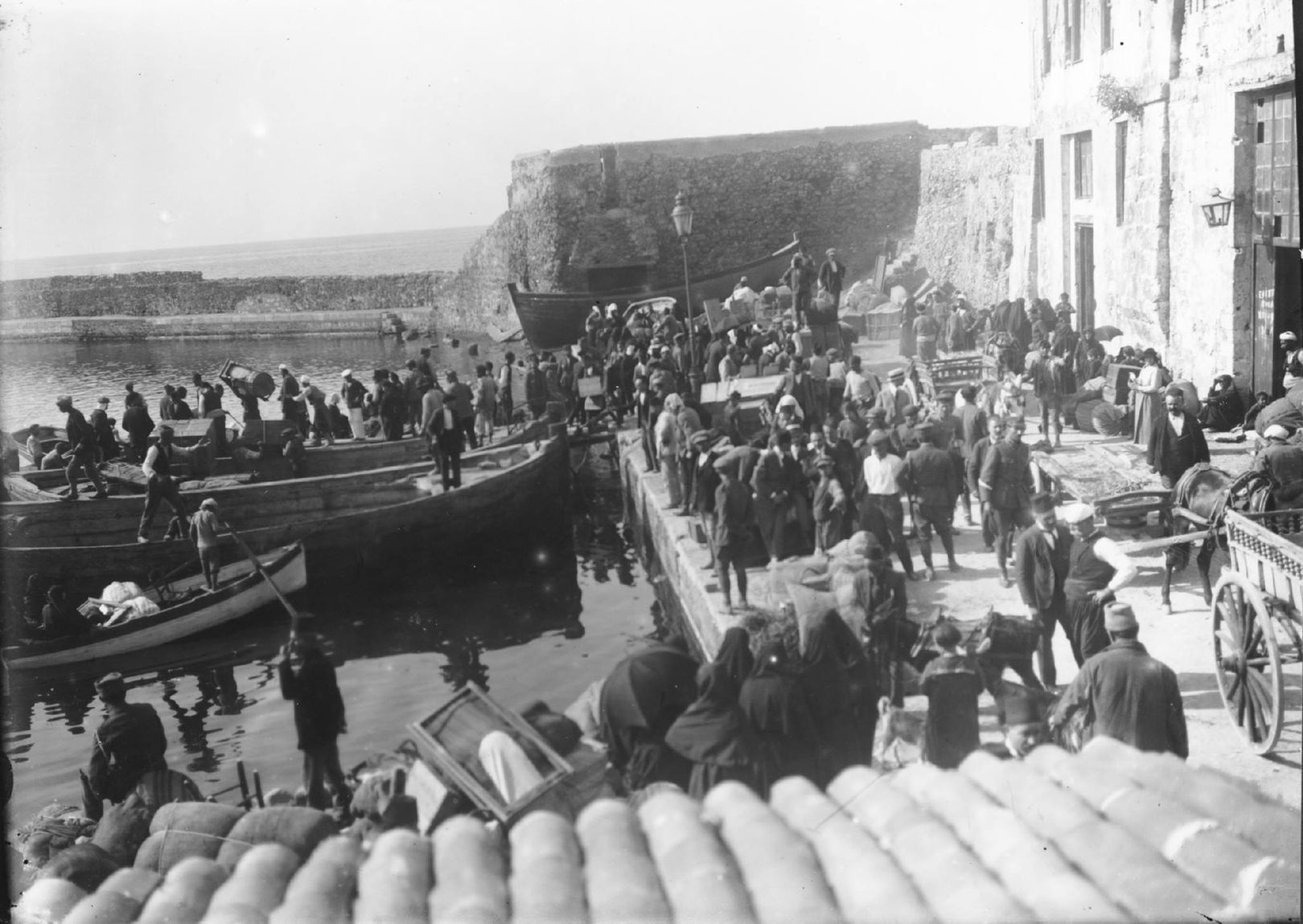The refugee arrival in numbers
Full Description
The refugees arriving from Asia Minor disembarked at various ports which were not necessarily the places where they would eventually settle. Most refugees drifted around the country a lot before settling permanently.
In the first years after their arrival, the refugees moved around the country because they were exploring their options or because they were desperately looking for their relatives and compatriots. It appears that those refugees who were allowed to leave their port of arrival took advantage of the opportunity. ‘During the first three or more years, the bourgeois refugees moved constantly as if driven by some strange instinct. There are very few bourgeois families which did not flutter from one large city to the next again and again to see with their own eyes what kind of prospects were on offer’, concluded a 1928 Refugee Settlement Commission report.
Although there is bound to be discrepancies between the actual numbers of arrivals and the refugee censuses of the time due to the difficult conditions in which they were conducted, they still reflect the fluctuations in the numbers of refugees even in Crete, an island remote from most refugee reception points given the means and networks of transport available at the time.
The Book of Refugee Statistics for the island of Crete contains tallies taken by the island’s prefects between 1922 and 1923. The first tallies were taken by prefecture at the end of 1922, while a second round was carried out in the summer of 1923 on the eve of the population exchange. The two tallies differ by about 10,000 people: at the end of 1922, it was estimated that the entire island was hosting 36,700 refugees, while in July 1923 their total number was approximately 26,700.
The Prefect of Lasithi noted in November 1922: ‘The number of refugees fluctuates due to their movement by land from prefecture to prefecture’. On the last two pages of the refugee population record, the writers attempted to calculate the waves of arrivals and departures in Chania between June and October 1923: ’32 families/111 persons left from September 1, 1923, to September 20, 1923. 54 families/150 persons arrived from June 1, 1923, to September 15, 1923’ and so on.
When this record is compared with the official population census of 1928, a more complete picture of the distribution of refugee populations starts to emerge. In Issue I: Actual and Legal population – Refugees, in table 41, ‘Refugees in Greece by Region’, Crete appears to host a total of approximately 34,000 refugees in 1928, a number falling between the local tallies of 1922 and 1923.
Cross referencing the national census and the local records also reveals the numbers of refugees who finally settled on the island by prefecture. The number of refugees who settled in the prefecture of Heraklion was higher than the number of refugees who arrived there in 1922, as was the case for Rethymno. The size of the refugee population remained stable in Lasithi, while in Chania the number of refugees who ended up settling in the prefecture was significantly lower than the number of arrivals (about 10,000). Specifically for the prefecture of Heraklion, there is a study by Evgenia Lagoudaki-Sasli entitled Special Refugee Census which contains a comprehensive list of the refugees who settled in Heraklion after acquiring Greek citizenship in other Greek cities from 1923 onwards.
The opportunities offered by different places, the choices provided to refugees, the networks they developed, as well as luck and randomness, were all factors which influenced the final distribution of refugees across the Greek territories.
Bibliography
Aleka Karadimou-Yerolympos, ‘The city and the country. Transformation and restructuring within the national space’ in Ch. Chatziiosif (ed.), History of Greece in the Twentieth Century, 1922-1940: The Interwar, vol. 2.1, Vivliorama, Athens 2002, pp. 59-105.
Henry Morgenthau, I was sent to Athens, available online at http://www.hri.org/docs/Morgenthau/
Evgenia Lagoudaki-Sasli, Special Refugee Census, Municipality of Heraklion 2009.
Hellenic Statistical Authority, Statistical Results of the Population Census in Greece, May 15-16, 1928. I. Actual and Legal Population – Refugees, published in Athens by the National Printing House 1933.
